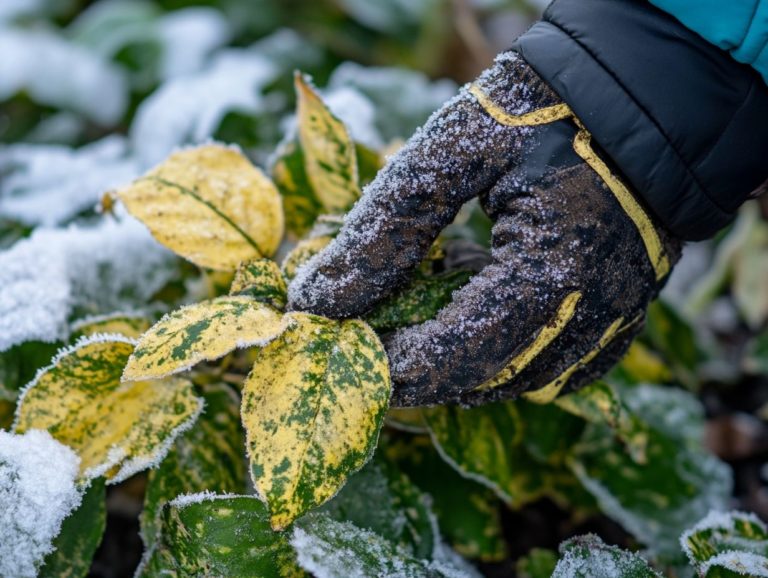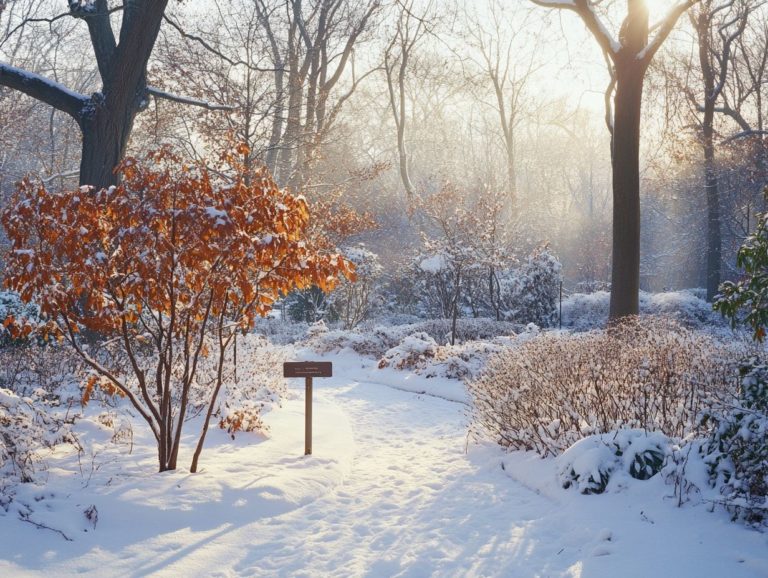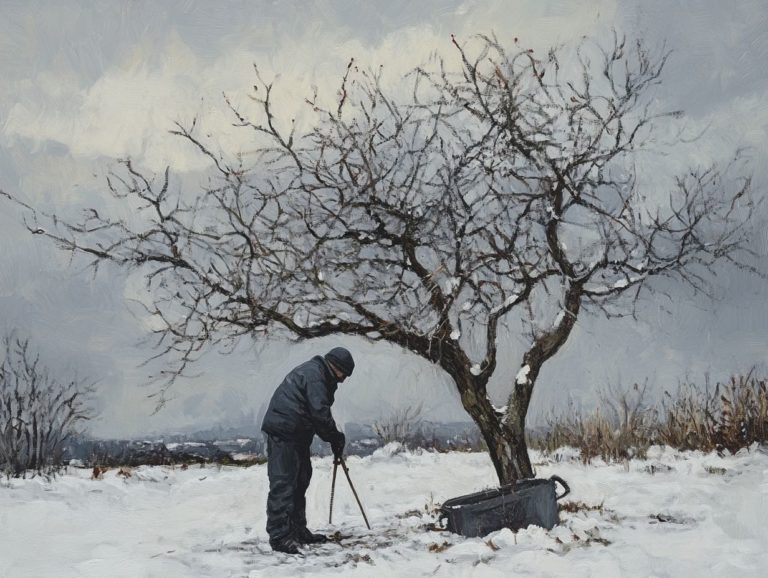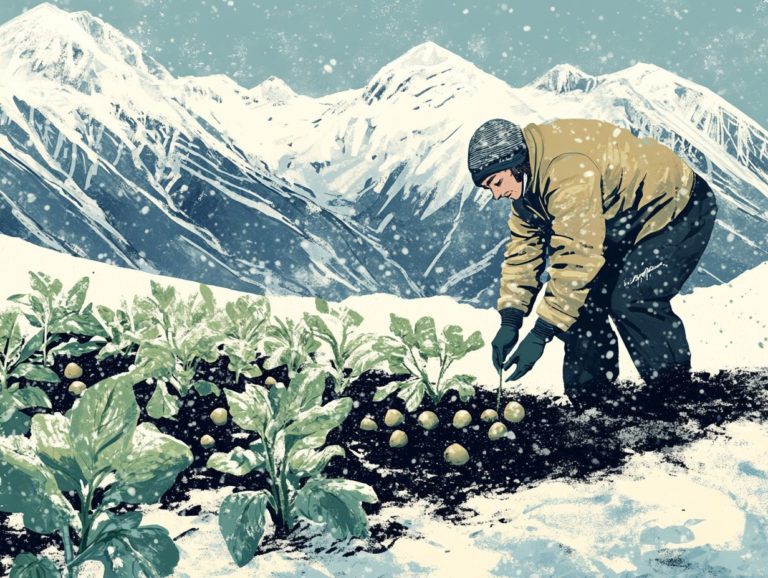How to Attract Pollinators in Winter?
Pollinators are essential to the health of our ecosystems. However, their needs often go unnoticed during winter.
This article explores the importance of pollinators, even in colder months. You’ll learn how to attract and support these vital creatures through thoughtful planting and shelter.
Whether you re a gardener or a nature lover, discover how to create a winter pollinator garden. Get involved in community efforts to help these essential allies thrive year-round.
Contents
- Key Takeaways:
- The Importance of Pollinators
- Common Pollinators in Winter
- Ways to Attract Pollinators in Winter
- Creating a Winter Pollinator Garden
- Other Ways to Support Pollinators in Winter
- Frequently Asked Questions
- What are some ways to attract pollinators in winter?
- Do pollinators hibernate in winter?
- How can I provide shelter for pollinators in winter?
- Which plants are best for attracting pollinators in winter?
- Why is it important to attract pollinators in winter?
- What are some tips for maintaining a pollinator-friendly garden in winter?
Key Takeaways:
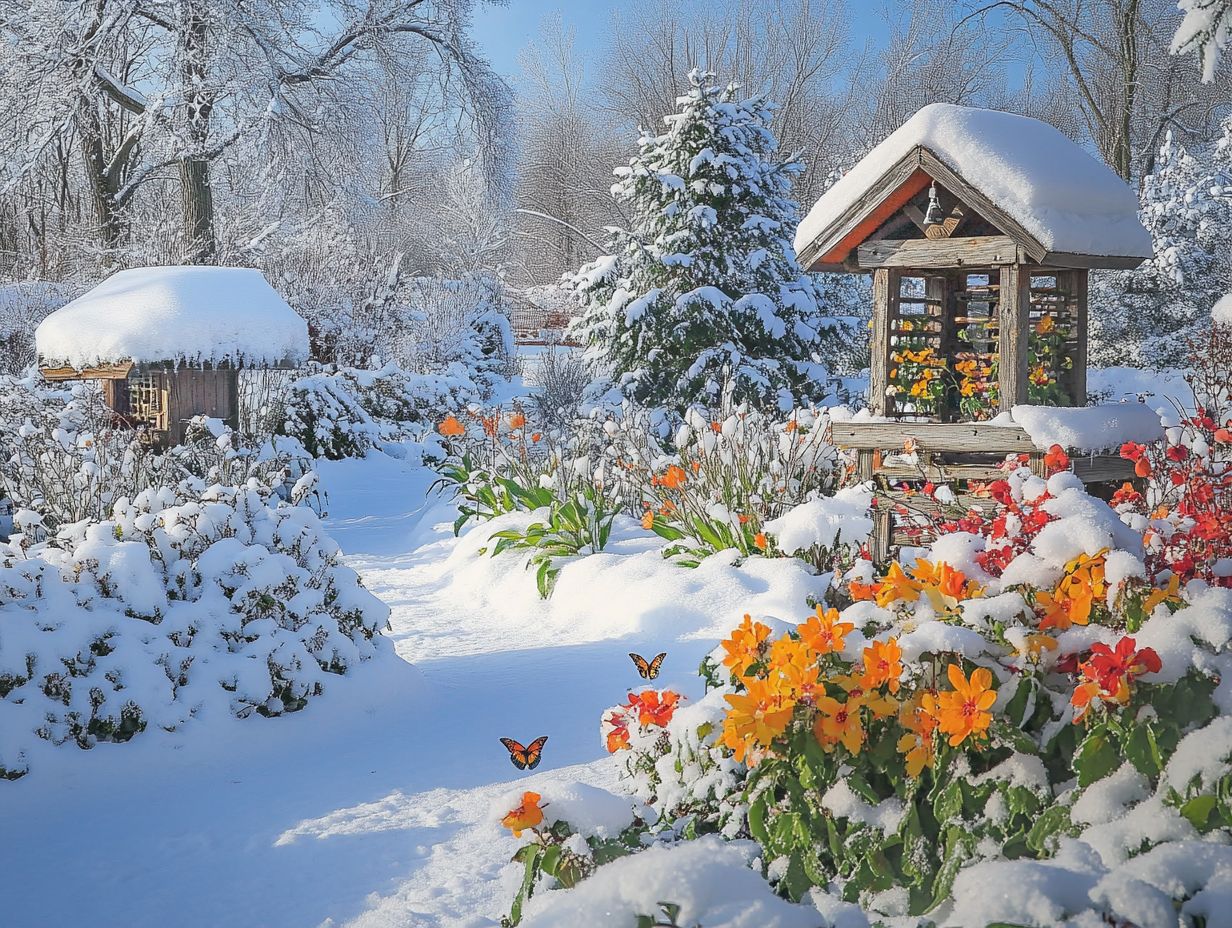
- Pollinators play a crucial role in maintaining healthy ecosystems, even in winter.
- Identify winter pollinators in your area. Create a welcoming environment by planting specific flowers and providing shelter.
- Consider a winter pollinator garden and involve your community in supporting these vital insects.
The Importance of Pollinators
Pollinators, especially honey bees and bumblebees, are critical for healthy ecosystems. They enhance biodiversity and boost food production.
Climate change poses challenges, and pollinators help support the environment and promote sustainable practices in community gardens.
Why Pollinators are Essential for Ecosystems
Pollinators ensure the reproduction of diverse plants, supporting biodiversity and food sources for wildlife. For example, sunflowers depend on bees for pollination.
When pollinator populations decline, it affects the entire food web. This can lead to decreased plant diversity and less food for herbivores.
This connection highlights the importance of pollinators in maintaining healthy ecosystems.
Common Pollinators in Winter
Pollinators like honey bees and bumblebees remain active in winter. They show remarkable resilience and play a key role in sustaining ecosystems during colder months.
Identifying Winter Pollinators
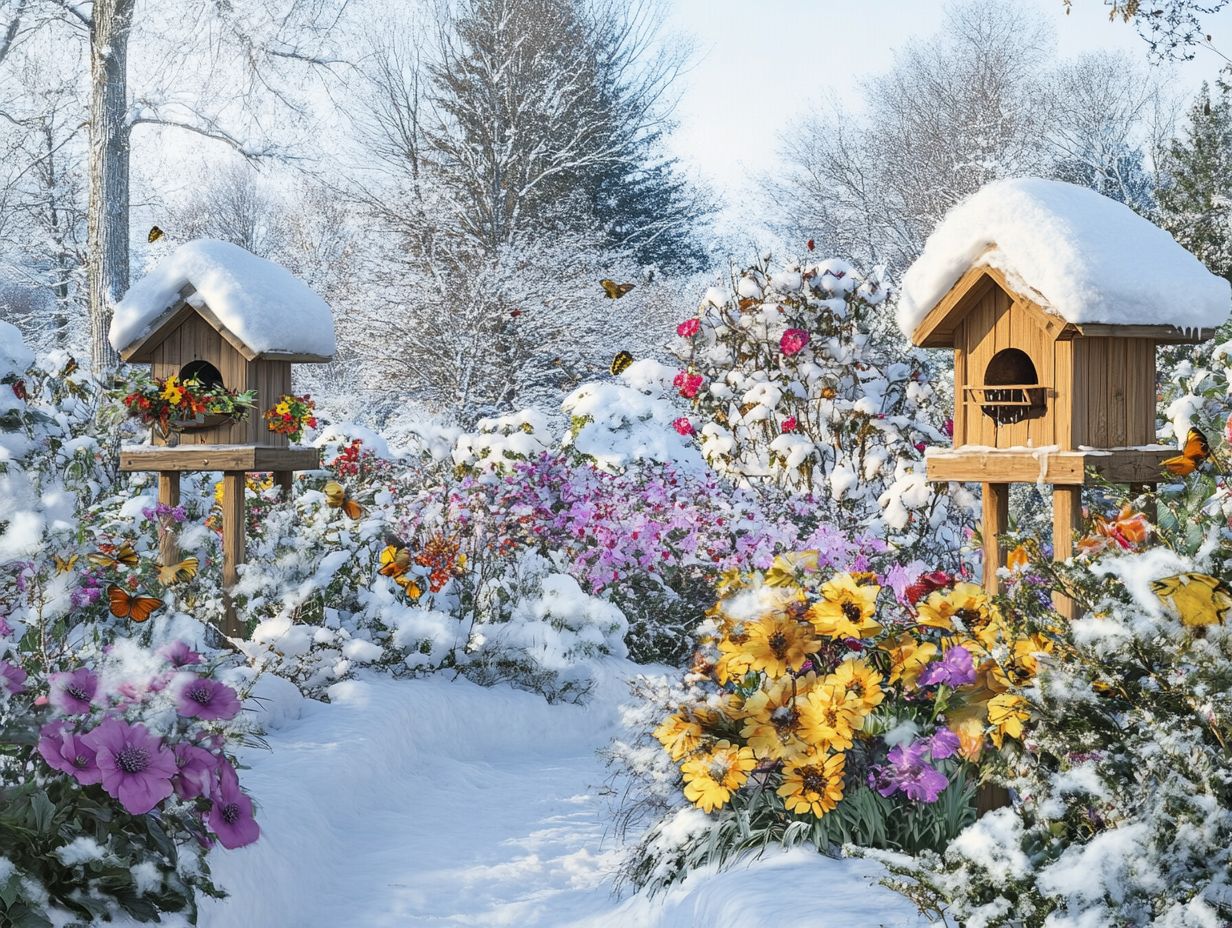
To identify winter pollinators, look for honey bees and bumblebees that venture out in milder temperatures. These insects have robust bodies and fuzzy coats that help insulate them from the cold.
On warmer winter days, you might spot them visiting early flowering plants like snowdrops or winter jasmine, which provide vital nectar.
Finding these pollinators requires patience and keen observation. Although they are less active, the excitement of spotting them is rewarding.
Ways to Attract Pollinators in Winter
To attract winter pollinators, choose winter-blooming plants and provide reliable food sources. This can entice these crucial insects to your garden even in colder months, as outlined in our guide on understanding winter pollinators.
This approach supports pollinator populations and enhances the beauty of your winter landscape.
Planting Strategies and Tips
Implementing effective planting strategies is essential for crafting a winter garden that truly supports pollinators. Understanding techniques that help with pollination in cold weather can enhance your efforts. Winter-blooming flowers provide vital nectar and pollen, making them the stars of the show.
Don t miss out on planting hardy winter-blooming plants like hellebores and winter aconite. These beautiful plants attract vital pollinators, such as bees and butterflies. For example, hellebores, often called Lenten roses, thrive in shady spots and can produce charming blooms that peek through the snow.
Adding these plants to your winter garden enhances its aesthetic appeal while ensuring essential food sources for pollinators during the colder months.
To maximize their effectiveness, think about planting these flowers in clusters and using natural mulch to protect the roots and retain moisture. This approach helps create a thriving ecosystem for both your blooms and their winged visitors.
Providing Shelter and Food Sources
Providing adequate shelter and food sources for pollinators during winter is essential. It helps support their survival and encourages them to return to your garden when the warmth returns.
Create bee hotels for solitary bees to hibernate safely. These cozy structures protect bees from harsh weather and ensure they have a snug retreat.
Preserving natural habitats like patches of brush, dead logs, or leaf litter can create organic sanctuaries that are vital during the colder months.
Incorporating winter-blooming plants into your landscape is crucial, as they serve as a key food source, attracting honeybees and other beneficial insects even when temperatures drop.
Ensure a constant food supply to encourage these pollinators to thrive, enhancing the ecosystem within your garden and making it a welcoming space for them.
Creating a Winter Pollinator Garden

Designing a winter pollinator garden requires careful planning. Incorporating plants for pollinators in cold climates not only attracts pollinators but also enhances biodiversity.
Designing and Maintaining a Garden for Winter Pollinators
Focus your garden design on boosting biodiversity. Choose plants that thrive in winter conditions and provide essential resources for pollinators.
Incorporate a diverse array of native plants that bloom at various times throughout the year to ensure a continuous food supply. Create habitat features like brush piles, logs, and water sources to offer refuge for different pollinator species.
By using methods that are good for the environment, such as organic mulching and avoiding harmful pesticides, you can significantly improve your garden’s health.
For winter maintenance, keep your perennials intact to provide seeds and shelter, while strategic pruning will promote robust growth come spring. Cultivating a rich, inviting environment ultimately harmonizes your activities with nature, transforming your garden into a sanctuary for these vital pollinators.
Other Ways to Support Pollinators in Winter
Supporting pollinators through the winter involves more than just tending to your garden. Engage with your community and share information about the importance of these essential insects.
By raising awareness, you can help others understand how to protect pollinators during the colder months, ensuring their survival and vitality for seasons to come.
Community Involvement and Education
Community involvement and education are crucial in championing the cause of pollinators. By participating in local workshops and initiatives, you can raise awareness about their significance and embrace sustainable practices right in your neighborhood!
Collaborating promotes environmental responsibility and enables you to make meaningful changes in your own backyard. For instance, community gardens that feature native flowering plants have proven remarkably effective in creating natural habitats for bees and butterflies.
School-based educational outreach programs introduce young students to the interesting world of pollination, helping nurture a generation more attuned to ecological challenges. By supporting these activities, you play a vital role in enhancing the health and longevity of essential pollinator populations, which in turn helps maintain a balanced ecosystem.
Frequently Asked Questions
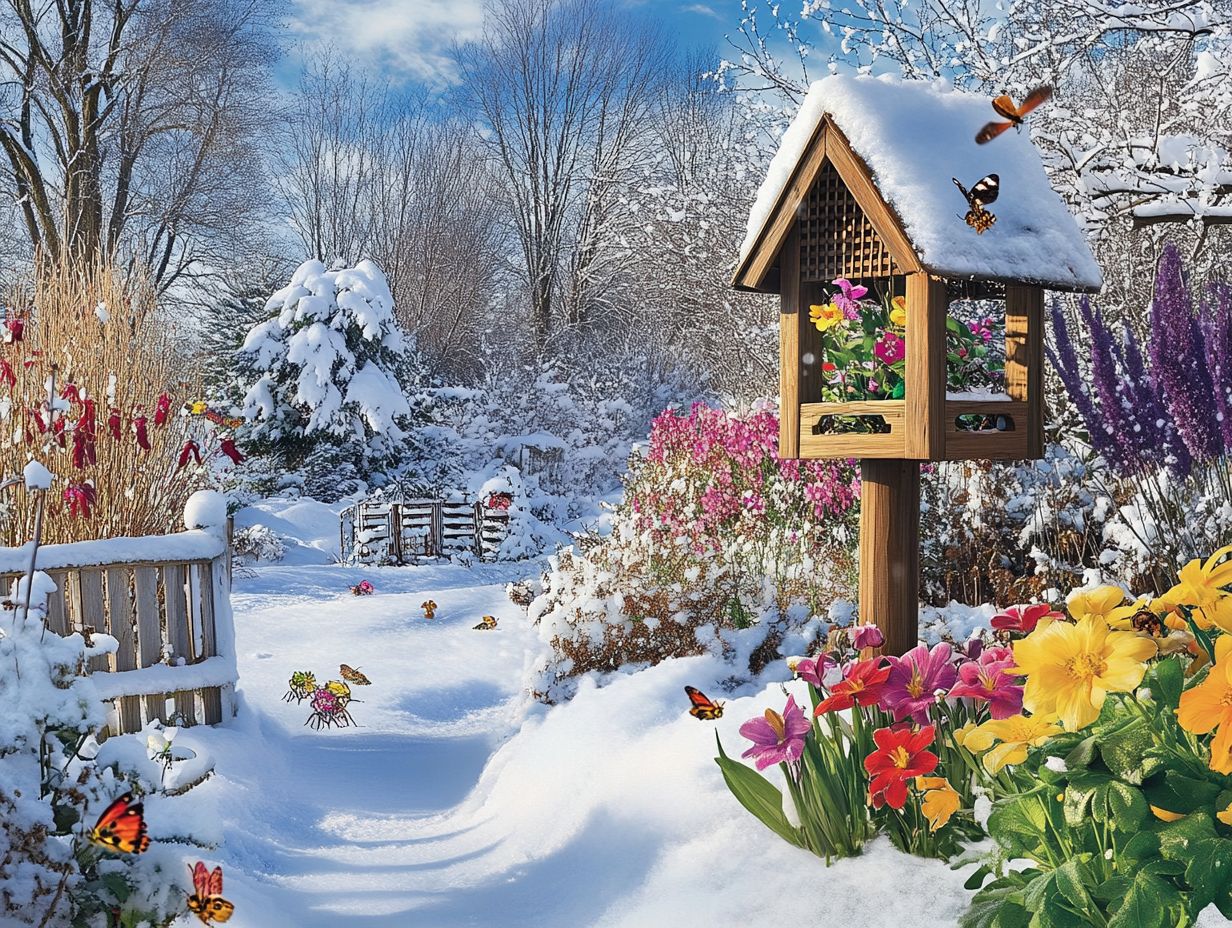
Curious about how to help pollinators during winter? Here are some common questions!
What are some ways to attract pollinators in winter?
One way is to plant winter-blooming flowers, such as hardy pansies, snapdragons, and winter heath.
Another way is to provide shelter and nesting spots for pollinators to hibernate in, supporting biodiversity.
Do pollinators hibernate in winter?
Yes, many pollinators, such as honey bees, bumblebees, butterflies, and ladybugs, hibernate during the winter months.
Providing shelter and food sources, like nectar and pollen, can help them survive the cold weather.
How can I provide shelter for pollinators in winter?
You can create DIY shelters, like a bee hotel, using materials like twigs, leaves, and cardboard.
Additionally, leaving some areas of your garden untrimmed provides natural shelter for pollinators and supports local wildlife.
Which plants are best for attracting pollinators in winter?
Some examples of winter-blooming plants that attract pollinators are:
- Hellebores
- Winter jasmine
- Oregon grape
- Witch hazel
It’s also important to choose a variety of plants, including perennials and annuals, that bloom at different times throughout the winter to provide continuous food resources.
Why is it important to attract pollinators in winter?
Pollinators play a crucial role in our ecosystem by helping plants reproduce and produce food, including vegetables and fruits.
Attracting pollinators in winter ensures their survival and helps maintain a healthy balance in nature, even in the face of climate change. For more insights, check out understanding pollination in winter crops.
What are some tips for maintaining a pollinator-friendly garden in winter?
In addition to providing shelter and food sources, such as flowering trees and shrubs, it’s important to keep your garden free from pesticides, as they can be harmful to pollinators.
Using a variety of plants, including native species and eco-friendly cover crops, provides a diverse and continuous food source for pollinators throughout the winter.
Get involved today and help protect our pollinators!


